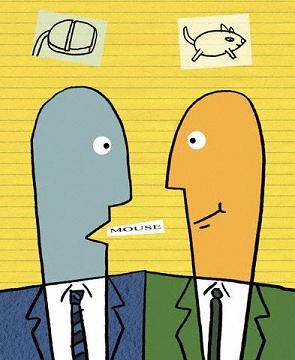I was never a very docile child and have been sent out of the classroom on more than one occasion. Mainly for asking too many questions or talking to my neighbour. While the first two minutes or so of standing outside the classroom saw me repentant and subdued, I would soon be engrossed by the black and white marble flooring of the long corridor. This would then turn into a game of hopscotch. I had thus effectively turned the 30 minutes of punishment into play drawing covetous glances from my friends inside caught in the trap of world history or whatever else happened to be going on.
This is what Tom does when Aunt Polly, as a punishment, orders Tom to whitewash her 810 square-foot fence. He's not exactly thrilled.
Excerpts from: The Adventures of Tom Sawyer by Mark Twain
Tom appeared on the sidewalk with a bucket of whitewash and a long-handled brush. He surveyed the fence, and all gladness left him and a deep melancholy settled down upon his spirit. Thirty yards of board fence nine feet high. Life to him seemed hollow, and existence but a burden.Till a sudden burst of inspiration hits him. When his friend Ben appears, he makes the job seem like a fantastic privilege.
He had discovered a great law of human action, without knowing it — namely, that in order to make a man or a boy covet a thing, it is only necessary to make the thing difficult to obtain.Tom soon turns the act of whitewashing the fence into a game with more and more of his friends joining him.
Thus, Mark Twain drives home the great motivational force that works with all human beings...
Work consists of whatever a body is obliged to do. Play consists of whatever a body is not obliged to do.And, Dan Pink arrives at the following:
"Drawing on four decades of scientific research on human motivation, Pink exposes the mismatch between what science knows and what business does—and how that affects every aspect of life. He demonstrates that while carrots and sticks worked successfully in the twentieth century, that’s precisely the wrong way to motivate people for today’s challenges. In Drive, he examines the three elements of true motivation—autonomy, mastery, and purpose—and offers smart and surprising techniques for putting these into action."Once Tom takes control of the task and behaves autonomously, he is able to arrive at a purpose for performing it too...
Can we similarly find a purpose in our daily, mundane tasks and turn work into play?
This book is a must read in this age of concept workers, where intrinsic motivation will play a much greater role than extrinsic ones in deriving the best from the work force.
Also read:
The secret to great work is great play
Effortless Success – How to turn work into play and succeed on a massive scale
Listen to:
Tim Brown on creativity and play












